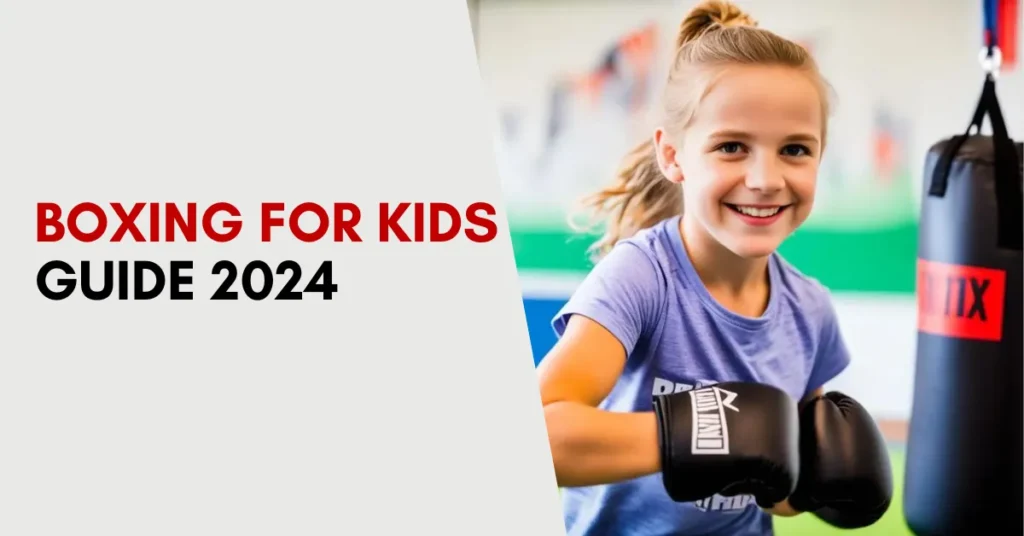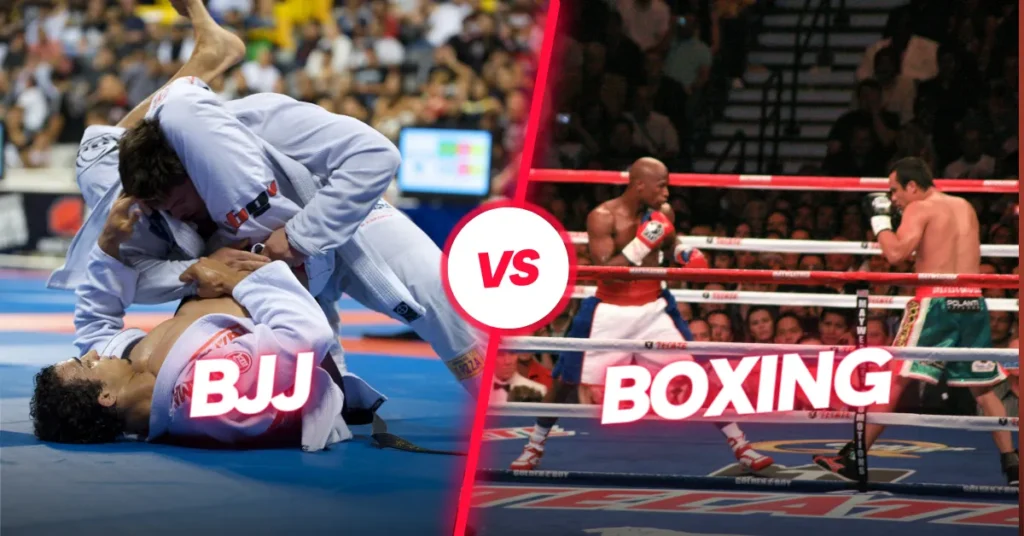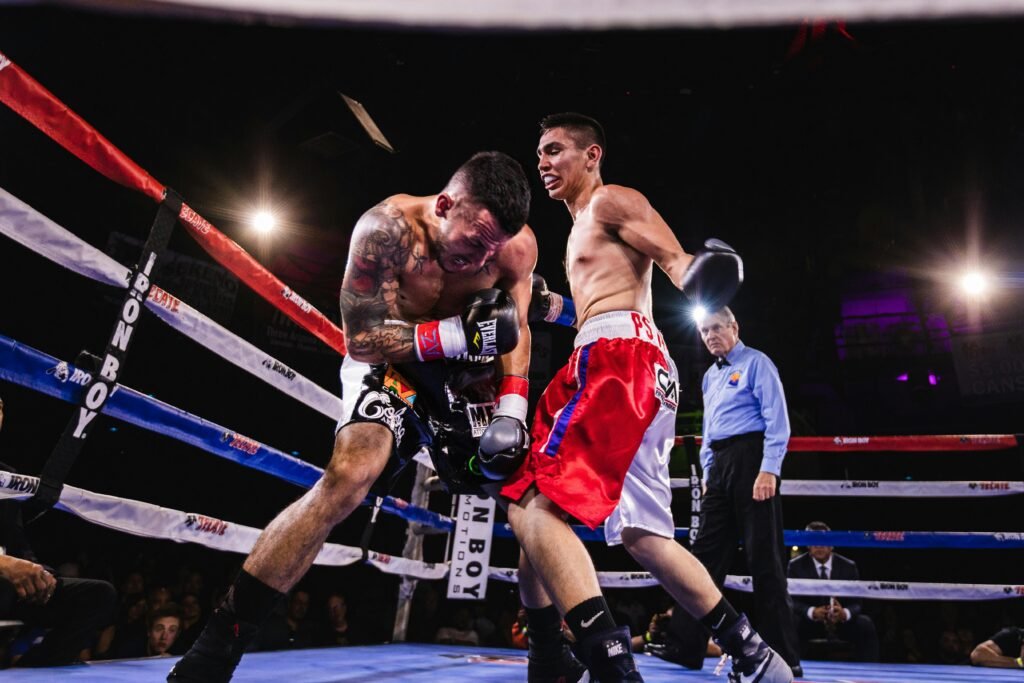Did you know that people of all ages can engage in boxing? Kids can love this sport as well, and it has many advantages for their mental and physical growth. Children can safely participate in boxing and enjoy its benefits with the correct instruction and supervision.
Table of Contents
Key Takeaways
- Boxing can be a safe and beneficial sport for kids when approached with responsible training.
- Benefits of boxing for kids include improved self-confidence, hand-eye coordination, discipline, and physical fitness.
- Creative drills can make boxing training more engaging and enjoyable for kids.
- At-home training can be a great way to introduce kids to boxing, with parents playing an active role.
- Kids boxing classes offer structured training programs tailored to different age groups.
Is Boxing Safe for Kids?
Like most sports, boxing does have its risks. However, with proper rest, appropriate safety equipment, and guidance from a professional trainer, boxing can be a safe sport for kids to participate in. It is important to prioritize the safety of children by avoiding hard sparring and ensuring they train with qualified individuals who can help them train safely.
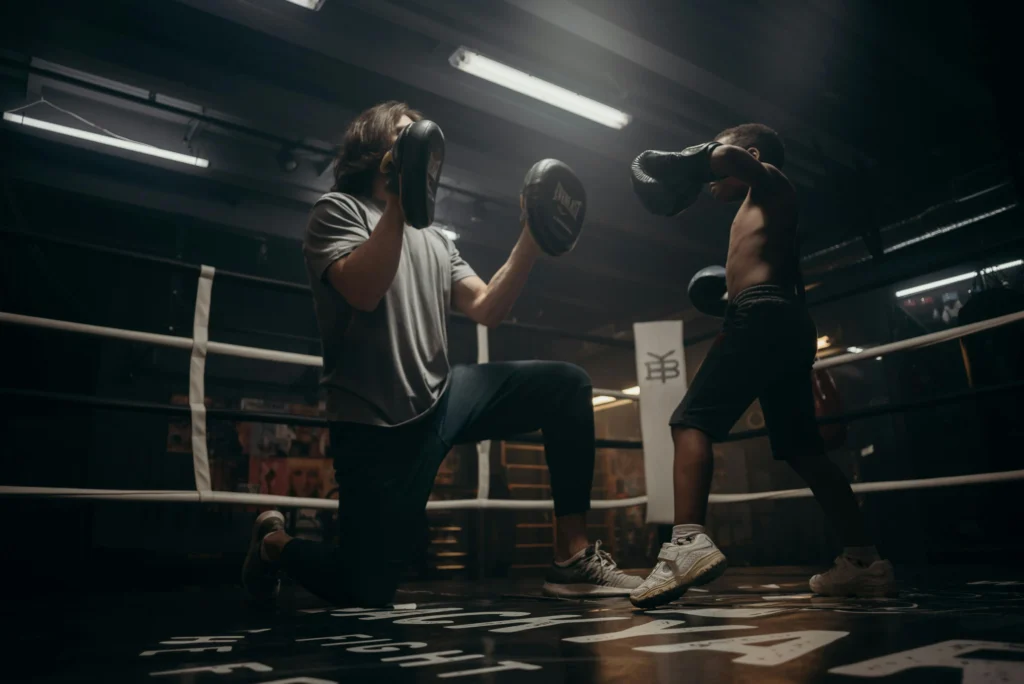
Responsible training is crucial when introducing boxing to kids. It involves using appropriate safety gear, such as properly fitted and padded boxing gloves, headgear, mouthguards, and protective hand wraps. These protective measures help reduce the chances of injury and ensure a safer training environment.
A professional trainer is very important in ensuring the safety of young boxers. By working with a qualified instructor who specializes in boxing, children can learn proper technique, develop their skills gradually, and understand the importance of safety in the sport. Professional trainers prioritize responsible training methods and emphasize the importance of warm-up exercises, correct form, and supervised practice.
Tips for Safe Boxing Training for Kids:
- Always warm-up before training sessions to prepare the body for physical exertion.
- Focus on technique and skill development rather than intense sparring.
- Encourage proper hydration and rest periods to prevent overexertion.
- Monitor for signs of fatigue or injuries and allow ample time for recovery.
- Use appropriate safety gear and ensure it fits properly to provide adequate protection.
By implementing safe training practices and working closely with a professional trainer, kids can enjoy the benefits of boxing while minimizing the risks associated with the sport. Boxing can help children build self-confidence, improve discipline, enhance physical fitness, and develop valuable life skills. With the right guidance and a focus on safety, boxing can offer a rewarding and safe experience for young athletes.
Benefits of Boxing for Kids
Boxing training offers numerous benefits for kids in terms of their mental, physical, and social development. It is a sport that can have a positive impact on children’s lives, enhancing various aspects of their well-being.
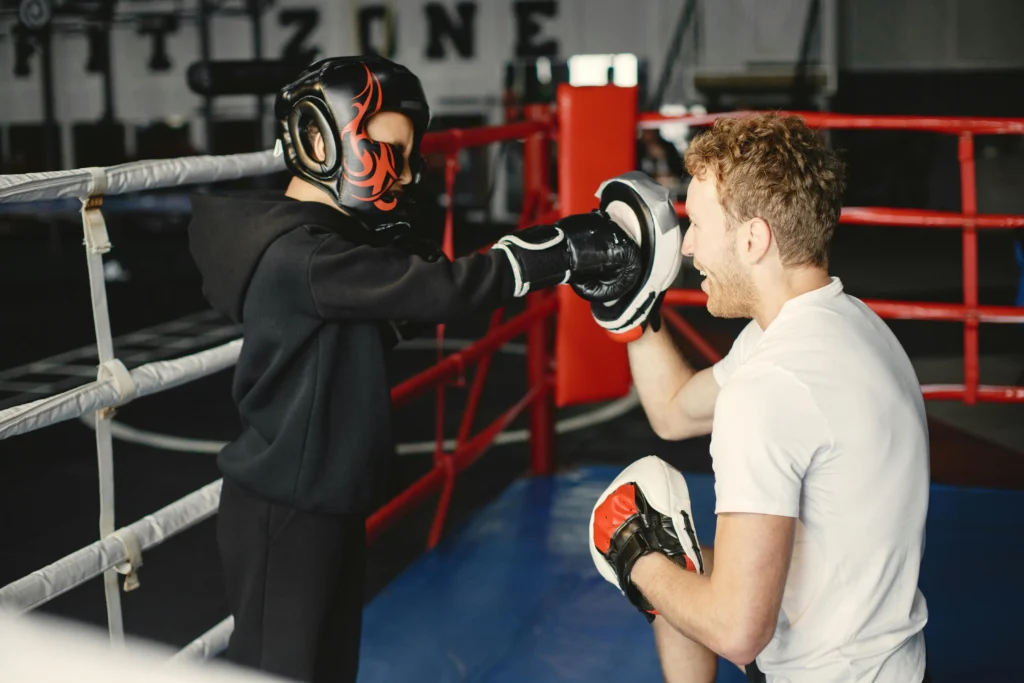
Improved Self-Confidence
Participating in boxing can greatly boost a child’s self-confidence. As they learn and master new skills, their self-esteem grows, empowering them to believe in their abilities both inside and outside the ring. Overcoming challenges and achieving personal goals in boxing helps children develop a strong sense of self-worth and resilience.
Enhanced Hand-Eye Coordination
Boxing requires precise timing and coordination between hand movements and visual perception. By practicing boxing techniques such as punching combinations and defensive maneuvers, kids can improve their hand-eye coordination. This skill not only benefits their boxing performance but also translates to other areas of their lives, such as academics and everyday activities.
Create Friendships
Another nice benefit is creating friendships. In boxing, depending on the exercise you usally train in pair or more. This can create opportunities for kids, who are training with each other, to become friends and create a bond, perhaps even a healthy rivalary. This can
Developed Discipline
Boxing instills discipline in children as they follow a structured training regimen and adhere to rules and regulations. The sport requires dedication, commitment, and focus, teaching kids the importance of hard work and perseverance. Through consistent training, young boxers learn valuable life skills such as responsibility, time management, and self-discipline.
Enhanced Physical Fitness
Engaging in boxing training provides a comprehensive workout that improves physical fitness in multiple ways. The sport enhances cardiovascular endurance, as it involves intense bursts of activity followed by brief periods of rest. Additionally, boxing training builds strength, agility, and flexibility, contributing to overall physical well-being. It also promotes healthy weight management and encourages an active lifestyle among children.
Boxing offers an array of benefits for kids, including improved self-confidence, hand-eye coordination, discipline, and physical fitness. The sport not only promotes their overall well-being but also teaches valuable life skills such as perseverance and determination. By engaging in safe and responsible training, children can reap the rewards of boxing and develop into resilient individuals.
Creative Boxing Drills for Kids
Incorporating creative drills into kids’ boxing training can make it more engaging and enjoyable. These drills not only enhance their boxing skills but also provide valuable lessons in discipline, balance, and agility. Here are some exciting and effective boxing drills for kids:
1. Shadow Sparring
Shadow sparring is an essential drill that helps kids develop self-control, balance, and footwork. In this drill, the child practices boxing techniques without a partner, throwing punches and moving around as if they were in an actual fight. It allows them to improve their form, speed, and coordination.
2. One-Legged Boxing
One-legged boxing is a fun and challenging drill that improves balance and coordination. The child stands on one leg and throws punches while maintaining stability. This drill not only enhances their boxing skills but also strengthens their core and leg muscles.
3. The Heavy Bag
Using the heavy bag is an excellent way for kids to build endurance and manage aggression. It allows them to practice their punches with power and precision while improving their strength and hand-eye coordination. The heavy bag also serves as a stress-reliever, allowing kids to release their energy and frustrations in a controlled manner.
4. Paper Mouth
Paper mouth is a fun and interactive drill that improves agility, defense, and attack skills. The child holds a small paper between their teeth while their partner tries to take it away by throwing punches. This drill teaches kids to dodge and block punches effectively while engaging their reflexes and agility.
5. Sock Drill
The sock drill is a unique drill that focuses on speed, accuracy, and hand-eye coordination. The child wears socks on their hands instead of gloves and works on hitting specific targets, such as a pad or a partner’s hands. This drill improves their timing, precision, and control over their punches.
These creative drills not only make boxing training fun for kids but also enhance their boxing skills and overall physical fitness. They help children develop discipline, focus, and self-confidence while providing them with a safe and structured environment to learn and grow. By incorporating these drills into their training sessions, kids can experience the many benefits that boxing has to offer.
What to Expect in Kids Boxing Classes
Kids boxing classes offer a structured training program designed to cater to different age groups. These classes provide a safe and supportive environment where children can learn boxing techniques, improve their fitness, and develop a love for the sport. Expect a range of exercises, drills, and games that are specifically tailored to each age group’s abilities and goals.
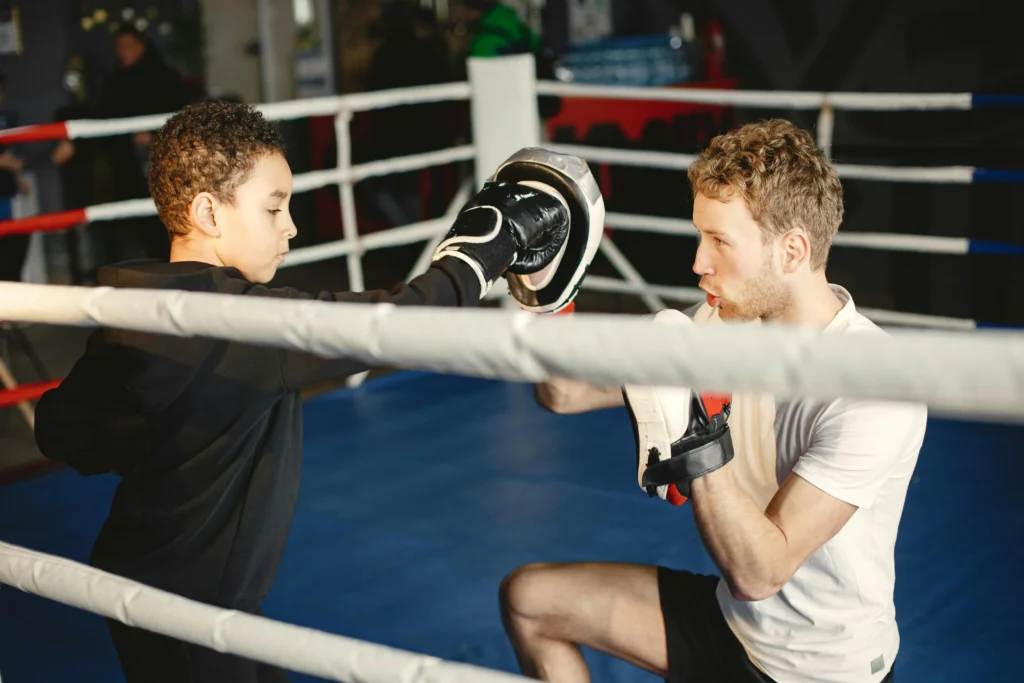
Age Groups
In kids boxing classes, participants are typically divided into different age groups to ensure appropriate training and development. This allows instructors to provide age-appropriate instruction, exercises, and sparring opportunities that are suitable for each child’s physical and mental capabilities. Younger kids, usually aged 5 to 8, focus on non-contact games and basic boxing techniques to build a foundation of skills. Older kids, between the ages of 9 and 12, may progress to practical scenario training and light sparring to further enhance their boxing abilities.
Exercises and Drills
Boxing classes for kids incorporate a variety of exercises and drills that help improve their boxing skills, physical fitness, and overall coordination. These exercises may include shadow boxing, footwork drills, punching combinations, defensive techniques, and agility exercises. By engaging in these activities, children can enhance their boxing technique, speed, and endurance while developing their coordination and focus.
Sparring
Sparring is an integral part of advanced boxing training, even for kids. However, in kids boxing classes, sparring is introduced gradually and in a controlled environment. Light sparring sessions allow children to practice their skills in a safe and supervised manner. It helps build their confidence, decision-making abilities, and adaptability. The focus is on technique and understanding rather than intense competition or physical aggression.
Conclusion
Boxing for kids offers safe and rewarding training that contributes to their overall physical and mental health. Through structured classes and the guidance of qualified instructors, children can benefit from improved cardiovascular fitness, hand-eye coordination, and strength.
On the physical health front, boxing helps children develop their cardiovascular fitness by engaging in high-intensity workouts. The sport also enhances hand-eye coordination, as participants must focus on their opponent’s movements and react accordingly. Additionally, boxing builds strength through the execution of techniques, punches, and defensive maneuvers.
Mental health is equally important, and boxing can play a significant role in fostering positive attributes in young athletes. Regular boxing training can boost confidence as children master new skills and test their abilities in a controlled environment. The discipline required to learn and practice boxing can instill a sense of focus and determination that can be applied to other areas of life.
In conclusion, boxing for kids offers a well-rounded approach to physical and mental development. By ensuring safe training methods and finding reputable instructors, parents can provide their children with a platform to improve their physical fitness, gain self-confidence, and develop discipline. Boxing prepares children for life’s challenges both inside and outside the ring, making it an excellent sport for kids to engage in.
FAQ
Is boxing safe for kids?
Yes, boxing can be safe for kids when they receive safe and responsible training, rest, and appropriate safety equipment. It is important to ensure they train with qualified instructors who prioritize their safety.
At what age can kids start boxing?
Kids can start boxing at around 7 to 9 years old. This age range is considered prime for beginning recreational boxing as children at this age are typically high-energy and capable of engaging in more vigorous physical activities. It also helps them develop the ability to follow instructions, fostering their tactical understanding of boxing.
How do I teach my 5 year old to box?
Teaching boxing to a 5-year-old can involve introducing basic techniques in a safe and fun manner. Focus on fundamental movements like footwork, stance, and basic punches such as jabs and hooks. Incorporating games and drills that mimic boxing movements can keep the child engaged and interested in learning.
Is it OK to start boxing at 12?
Starting boxing at 12 years old is generally acceptable. While there is no specific age limit for beginning boxing, children younger than seven are advised against participating in this contact sport. However, at 12 years old, individuals can safely engage in boxing training with proper guidance and supervision.
What age can you spar in boxing?
Children can typically begin light sparring in boxing around the age of 12 to 13. It’s important for sparring to be introduced gradually and only if the student expresses interest and with parental consent. Safety measures such as protective gear and supervised sessions should always be enforced to minimize the risk of injury during sparring sessions.
What are the benefits of boxing for kids?
Boxing offers numerous benefits for kids, including improved self-confidence, hand-eye coordination, discipline, and physical fitness. It provides a comprehensive workout that enhances strength, cardiovascular endurance, and agility.
What are some creative boxing drills for kids?
Creative boxing drills for kids include shadow sparring to teach self-control and balance, one-legged boxing to improve balance, and games like paper mouth and the sock drill to improve agility, defense, and attack skills.
What can I expect in kids boxing classes?
Kids boxing classes are typically divided into age groups and offer a structured training program. Younger kids engage in non-contact games and basic techniques, while older kids may progress to practical scenario training and light sparring. Classes focus on developing boxing skills, fitness, and understanding through various exercises, drills, and games.

